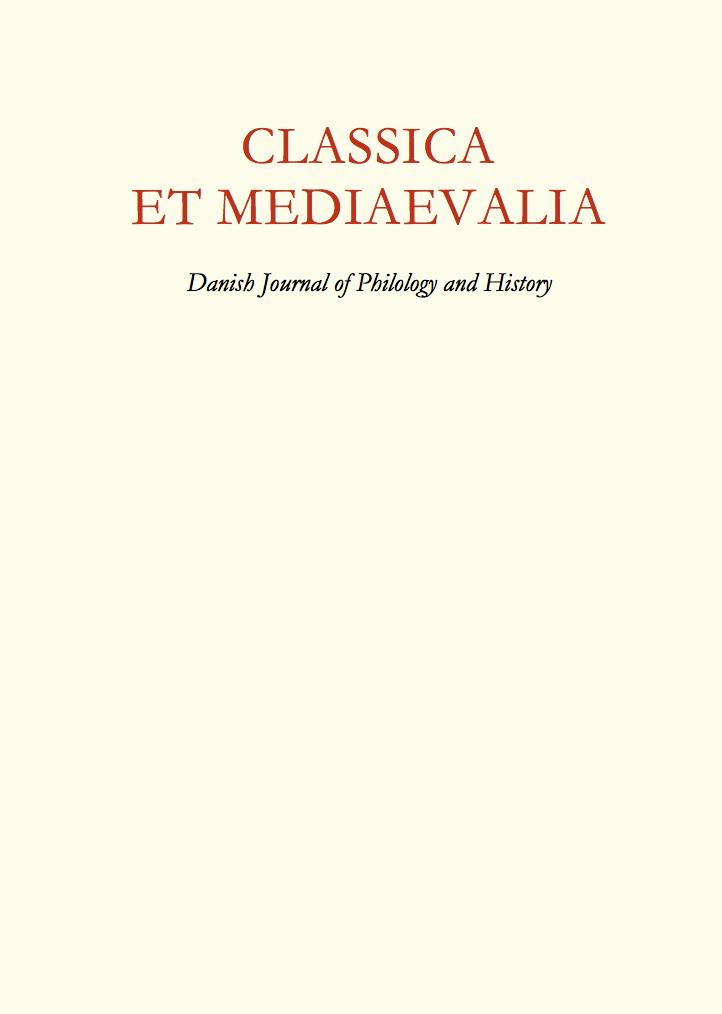Herodian's Septimius Severus: Literary Portrait and Historiography
DOI:
https://doi.org/10.7146/classicaetmediaevalia.v70i.130263Abstract
In this article I offer a comprehensive examination of Herodian’s narrative of the emperor Septimius Severus, with a focus on his literary programme and historical methodology. First, I corroborate the view of recent scholarship as regards Herodian’s complex characterization of Septimius Severus by offering new insights into Herodian’s technique of progressively shaping the emperor’s portrait with great richness and complexity. Second, I show that Herodian goes to some trouble to rework his source material, mainly Cassius Dio’s History, in order to favour a more positive reading of Severus, which best suits his themes and interests. Third, I argue that Herodian constantly employs intratextuality in order to develop substantial structural, thematic, and verbal associations and comparisons between Severus and other historical agents and thus draw the reader to perceive his history in a dovetailed and comparative manner. Thus, I propose that Herodian’s portrait of Severus is his own innovation, and that it should be tailored to his overall narrative method of providing a cohesive, unified, and intelligible re-configuration of the fragmented and chaotic post-Marcus world. I show that Severus’ portrait has been shaped by Herodian’s universalising view of imperial history, and that it is used to provide a sense of continuation and repetition among separate reigns by establishing thematic oppositions (mainly between activity and cowardice, and between tyrannical and enlightened behaviour), which recur as a unifying factor for his work as a whole.
Downloads
Published
How to Cite
Issue
Section
License
Copyright (c) 2021 Chrysanthos S. Chrysanthou

This work is licensed under a Creative Commons Attribution 3.0 Unported License.
Authors who publish with this journal agree to the following terms:
- Authors retain copyright and grant the journal right of first publication with the work simultaneously licensed under a Creative Commons Attribution License that allows others to share the work with an acknowledgement of the work's authorship and initial publication in this journal.
- Authors are able to enter into separate, additional contractual arrangements for the non-exclusive distribution of the journal's published version of the work (e.g., post it to an institutional repository or publish it in a book), with an acknowledgement of its initial publication in this journal.
- Authors are permitted and encouraged to post their work online (e.g., in institutional repositories or on their website) prior to and during the submission process, as it can lead to productive exchanges, as well as earlier and greater citation of published work (see The Effect of Open Access).





